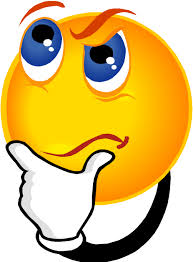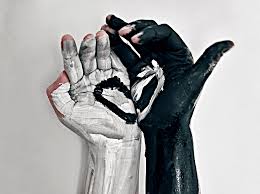Today’s NYT article, “Using Rap to Teach Pithy Lessons in Business” caught my attention because of my interest in the relationship between jazz structure, business strategy and corporate culture. So, help me work through some ideas…
The relationship between jazz and business is being fleshed out by several people including: myself (you’ll just have to wait, the article is coming out this spring in the Journal of Global Studies); collaborative enterprises between professors of business such as John Hollwitz at Fordham University and pianist Eli Yamin; trombonist Chris Washburne and members of the Columbia Business School. But the connection between business and hip-hop is a new one for me and I am intrigued.
So, in today’s article, Claire Cain Miller reports that Ben Horowitz uses rap lyrics to help manage emotion, articulate needs, and generally give voice to what may otherwise go unsaid. Ben acknowledges that “much of rap is about business” and he gives the examples of using hip-hop’s often rough language to help clients deal with troublesome board members or to help explain his own ideas on why founding CEOs are better than those appointed externally.  For Ben, rap is an efficient and powerful tool for addressing ambiguous or hostile situations; it provides the language for self-expression. Dealing with the stress of last-minute decisions can be frustrating or even debilitating; rap, for Ben, transforms this angst and channels it productively. In Miller’s article, Professor Adam Bradley situates the use of language culturally and says, “rap is such a direct mode of expression…because of the emphasis of language, of words above melody or harmony.” Bradley notes, “people think of rap lyrics as being only about money, women, status, and cocaine” but highlights its “more pervasive themes [of] leadership, collaboration and the vulnerability beneath the swagger” which are “all relevant in business.”
For Ben, rap is an efficient and powerful tool for addressing ambiguous or hostile situations; it provides the language for self-expression. Dealing with the stress of last-minute decisions can be frustrating or even debilitating; rap, for Ben, transforms this angst and channels it productively. In Miller’s article, Professor Adam Bradley situates the use of language culturally and says, “rap is such a direct mode of expression…because of the emphasis of language, of words above melody or harmony.” Bradley notes, “people think of rap lyrics as being only about money, women, status, and cocaine” but highlights its “more pervasive themes [of] leadership, collaboration and the vulnerability beneath the swagger” which are “all relevant in business.”
So, I have a couple of initial thoughts. Rap has the advantage of lyrics while jazz may or may not have lyrics. In my own work, lyrics are lacking. I tend to use instrumental pieces even when I discuss the blues because I deal with the music’s sounds and emotions and these don’t require lyrics. Rap is a vehicle for the unheard and allows a mode of expression that is powerful and empowering in its rhythmic flow.  This tradition and its force comes from the African-American oral tradition which comes from West African griots.
This tradition and its force comes from the African-American oral tradition which comes from West African griots.
I love the cultural transference indicated in Ben’s story. Who would think a Silicon Valley investor would use West African traditions as a meaningful part of his business strategy? Who would think the vernacular language of hip hop would/could penetrate the corporate technology sector which is not known for its high numbers of African-American employees or investors?
Concerns and Questions…
- That the culture of hip hop penetrates the corporate divide is really not so surprising and is an indication of the pervasiveness of African-American culture, its marketability, and its practical use. As Ben’s story makes clear, there is a definite need (and a high-level need at that) for hip-hop knowledge in the business world. So my question on this point is: how can we create jobs in the corporate and technology sectors that leverage the skills of people who are knowledgeable about rap, hip hop, oral culture and the like?
- One thing that piques my interest is the hostility of rap lyrics and the common misogyny.
 Considering Ben’s use of a song with “superaggressive” lyrics to help guide a client through a difficult situation: what is the impact of bringing hostility into the workplace on men; and also, to what extent does this contribute to an environment of increased hostility for women?
Considering Ben’s use of a song with “superaggressive” lyrics to help guide a client through a difficult situation: what is the impact of bringing hostility into the workplace on men; and also, to what extent does this contribute to an environment of increased hostility for women? - It’s great that Ben is so well versed in hip-hop that he could open his discussion before the Congressional Black Caucus with rap lyrics (I’d totally fail). Considering my interest in educating culturally, I wonder how we might deepen the understanding of the culture that led to the creation of globally recognized rap lyrics. How can we move from a topical consideration of the culture’s use for profit into a deeper understanding of the culture in order to, perchance, cultivate innovation in areas such as business and technology?
- My thought is to enrich the k-16 curriculum with oral history courses, poetry and performance studies. My guess is that by delving into oral history, in this case, we might recognize or identify cultural coping mechanisms or strategies for negotiation that move us in the opposite direction of misogyny.
But then there’s jazz…
Jazz hails from the African-American oral tradition too. The emotion Ben seeks to manage through rap is negotiated in jazz through the blues. Whereas in rap the verbal acuity can be seen as emanating from games such as playing the dozens or signifying; in jazz, this is a matter of “trading fours” (or eighths or twelves), a call-and-reponse pattern that flows in an obvious rhythm. The commercial market for jazz is certainly not what it is for hip hop. Jazz has institutions that hip hop does not and so is integrated into the culture differently. Both jazz and hip hop have bodies of scholarship that delve into their traditions.  Jazz and hip hop are both part of the cultural exports by the US Department of State. In thinking about the points of commonality between jazz and hip hop and also the current interest in mining their traditions for use in business strategy, it would be great to have a conversation about collaborating in order to devise a strategy for meeting market demands through educational initiatives, corporate workshops, job training, etc. (Cory Booker, are you listening?)
Jazz and hip hop are both part of the cultural exports by the US Department of State. In thinking about the points of commonality between jazz and hip hop and also the current interest in mining their traditions for use in business strategy, it would be great to have a conversation about collaborating in order to devise a strategy for meeting market demands through educational initiatives, corporate workshops, job training, etc. (Cory Booker, are you listening?)
The relationship between hip hop and jazz for business…
I guess my question on this is: in what ways can the joint cultures and traditions of hip and jazz be instructive in devising a model for collaborating, drafting policy, articulating needs and desires, etc., that connects the dots between education and business? How can we move the joint discussion in practical ways from the classroom to the boardroom or from theory to practice?

